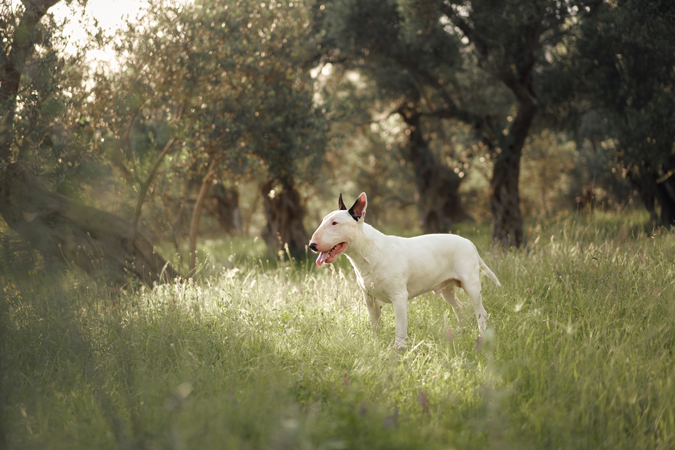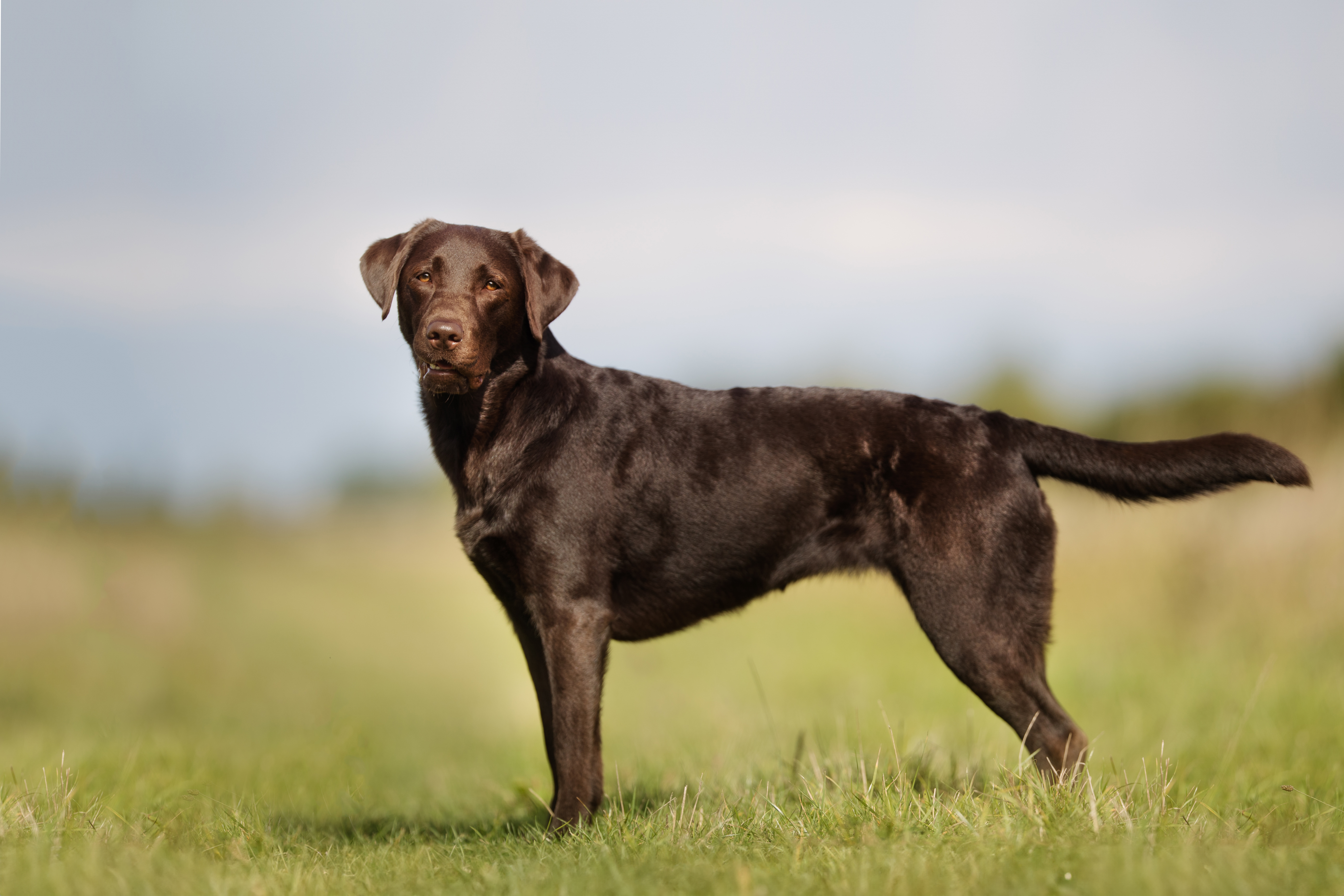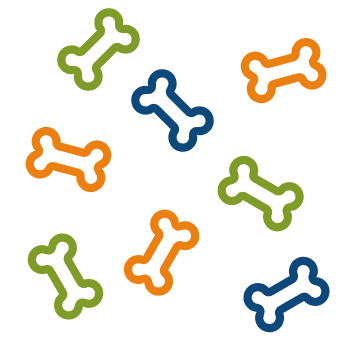
What is the best dog food?
The answer to the above question is subjective and depends on your own preference and that of your dog. We’ve made an overview of the most popular diets in every category, using our extensive range of dog foods.
Check out all current offers and enjoy discounts on top brands.
The Bull Terrier is a medium-sized dog with a unique and powerful appearance, characterized by its egg-shaped head. It has a determined nature and playful energy. This loyal dog is suitable for active people who have plenty of time for training and exercise, and who are patient with its balanced yet sometimes stubborn personality. This breed originated in 19th-century England through crosses between Bulldogs and Terriers. They were used in fights (“Bull Baiting” and “Bear Baiting”) where they had to face wild animals. Soon, the breed developed into an athletic companion dog, fortunately proving to be very good with people. The Bull Terrier is a good match for owners with dog experience who appreciate a strong but loving character.

In the late Middle Ages, so-called “Bull Baiting” and “Bear Baiting” were very popular. During these fights, dogs (mainly Bulldogs) were used in battles against bulls or bears. Later, this turned into dog fighting, which was especially popular among the nobility. To practice this “sport”, a more agile breed was needed. Through the crossbreeding of various dogs, the Bull Terrier was eventually developed. Fortunately, these fights were banned in 1835, and the breed gradually evolved into a social and friendly dog, known not only as a good watchdog but also regarded as a true gentleman.
The Bull Terrier is a unique, headstrong, and lively dog known for its energetic and playful character. Despite its tough appearance, Bull Terriers are surprisingly affectionate and often form a deep bond with their owner(s). They are social and love being involved in daily family activities. He is intelligent and has a strong will, which can make him a bit stubborn at times. A consistent and patient approach is therefore important. With its friendly and playful nature, the Bull Terrier is ideal for an active owner who is confident and assertive.
The Bull Terrier has a tough and recognizable appearance. With its egg-shaped head and curved skull, it’s a striking dog. Its small, triangular eyes give it a mischievous look. It has a muscular and solid body, a deep chest, and a compact yet robust build.
Size: The Bull Terrier is a medium-sized breed, with a shoulder height of 45 to 55 cm and a weight between 22 and 38 kg. There is also a Miniature Bull Terrier, which is smaller (25 – 35 cm). Both share the same distinctive look and temperament.
Coat: The Bull Terrier has a short, dense, and shiny coat. It comes in various colors but almost always combined with white.
This breed requires a significant amount of exercise and mental stimulation, as a bored Bull Terrier can become mischievous. Exercise should include multiple walks per day of at least one to one and a half hours, combined with play and mental challenges like games, puzzles, or dog sports.
The Bull Terrier’s coat needs little maintenance. A weekly brushing with a soft brush or rubber glove is usually enough to remove loose hair and keep the coat shiny.
Regularly check the eyes and ears for dirt, and trim its nails when necessary. Also, don’t forget to brush its teeth regularly to prevent dental problems.
The Bull Terrier can have sensitive skin, so watch for redness, flaking, and dry patches. Frequent bathing is not necessary unless there’s a specific reason.
With this simple yet regular care, your Bull Terrier will look its best!
Unfortunately, Bull Terriers are prone to several health issues.
The most common condition in this breed is atopy, a hereditary form of allergy that can cause itching, skin inflammation, and redness. Kidney failure and heart disease are also seen in this breed. Chronic kidney disease can lead to decreased appetite, increased drinking and urination, and eventually fatigue and general illness. Early detection is crucial for both heart and kidney failure.
Hip dysplasia also occurs in this breed, where the hip joints don’t develop properly, leading to pain, limping, and arthritis.
Patellar luxation may cause similar issues. It’s a hereditary condition where the kneecap easily dislocates. Lethal Acrodermatitis (LAD) is a disease unique to Bull Terriers and unfortunately cannot be treated. It causes lowered immunity and poor hair and nail growth, leading to serious health problems and a limited life expectancy. Breeders often test for this condition to reduce its occurrence.
Lastly, especially the white Bull Terrier has an increased risk of deafness in one or both ears.
Some breeds that are similar in appearance, temperament, and energy include the Miniature Bull Terrier, the American Staffordshire Terrier, and the American Pit Bull Terrier. Like the Bull Terrier, these breeds have a strong and compact build with an energetic and loyal character.
When looking for a Bull Terrier, it’s best to choose a responsible breeder who knows the breed well and focuses on health and temperament. Avoid puppy mills and breeders who offer multiple breeds. A good breeder will be open about the health of their dogs and hereditary conditions and will make every effort to properly socialize the puppies.
The price of a Bull Terrier can vary depending on factors like the care taken in breeding, pedigree, and health testing. While price is a factor, the most important thing is the health and socialization of the puppy. A lower price may indicate less attention to critical aspects like health screening and socialization.
It’s always recommended to choose a recognized and trustworthy breeder who contributes to the long-term health and well-being of your new family member.
The Bull Terrier is a friendly and cheerful dog. It has a quirky personality and can sometimes be defiant. Its stubborn nature requires an owner with experience, especially with energetic and strong breeds. Interested in this breed? Then take a look at the points below.
The Bull Terrier is suitable for owners who:
The Bull Terrier is best suited to social and loving owners with sufficient experience and time. It values companionship and dislikes being home alone. When bored, it can cause considerable damage with its strong jaws. Therefore, plenty of stimulation and challenge is essential.
The Bull Terrier is a friendly dog with a cheerful personality, but it can also be defiant and stubborn. For this reason, it’s not ideal for first-time dog owners. An experienced owner is needed to keep this dog happy.
The Bull Terrier is suitable for experienced owners due to its independent, sometimes stubborn nature and its need for consistent guidance.

The answer to the above question is subjective and depends on your own preference and that of your dog. We’ve made an overview of the most popular diets in every category, using our extensive range of dog foods.

This blog article discusses 10 commonly kept medium-sized dog breeds with the most important characteristics associated with these breeds. Dogs in this category have an adult weight between 10-25 kg. This is our top 10 medium dog breeds. Looking for a different breed? Check out our dog breeds page.

If you've ever owned a dog, you'll know that every dog is unique. Dogs can have breed-specific characteristics, though, like joint or coat issues. To support these specific characteristics, Royal Canin has created special nutrition that meets the needs of individual dog breeds. Read all about breed-specific dog food in this article!

Add products to view your basket
We use cookies to help us serve you better and more personally. Functional cookies ensure that the website works properly and have an analytical function. We also use technology to track your behaviour anonymously, both inside and outside our website. Personal data and cookies may be used for personalisation or advertising. Want to know more? Read our privacy policy and cookie statement here. If you choose to reject, we will only place functional and analytical cookies.
